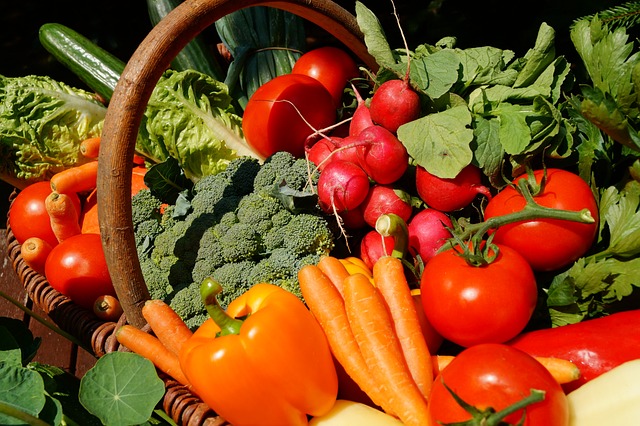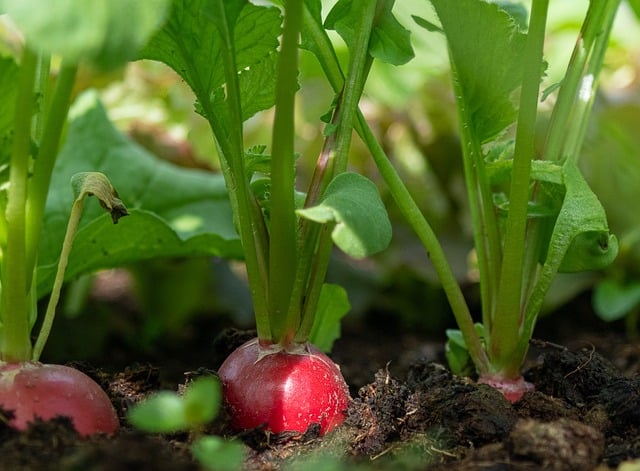Introduction – Community Gardens, An Incredible Resource
There’s so much one can do with a home garden farm for carbon reductions – food locally made avoids the carbon emissions associated with transportation, which can be hundreds or thousands of miles. With a community, multiply that by a factor of ten with all the people involved and you have a community garden farm. A community garden is what it sounds like- a garden owned and maintained by a local community, typically to grow fruits and vegetables for personal consumption or donation. These plots can be located on public or private land and are often organized through a local organization or government agency. So, how do community gardens help the environment? I will discuss it in the next section.

Community gardens promote a sense of community engagement and provide access to fresh produce for those who may not have their own space to grow it. They also provide economic benefits, allowing people to save money by growing their food and may even generate income by selling excess produce at farmers’ markets.
In addition to the practical benefits, community gardens also offer environmental advantages, such as reducing carbon emissions from transportation and providing habitats for local wildlife. Below we discuss high level thoughts about how a community is useful. If you want to set up your then take a look at our tips for successful community gardens.
How Do Community Gardens Help The Environment?
Community gardens can play an important role in improving the environment by promoting sustainable practices and minimizing the use of chemical pesticides. They also help reduce urban sprawl and encourage more people to enjoy nature outdoors. Additionally, community gardens provide a space for individuals to grow their food, which minimizes the need to transport food products from far-away farms.
There are many ways that community gardens can help to improve the environment. One important way is to promote sustainable practices such as reducing harmful pesticides and fertilizers, using rainwater to water plants, and composting food scraps.
Community gardens can provide valuable ecosystem services, such as increasing biodiversity and improving air quality. In addition, they can reduce urban sprawl by encouraging more people to live closer to where they work or play. This can reduce the need for long commutes, which improves overall health and helps to minimize environmental impacts from transportation.
Another important benefit of community gardens is that they provide a space for people to grow their food. This minimizes the need for long-distance transportation of food products, reducing the associated carbon emissions and fuel use. Additionally, growing food at home helps to reduce dependence on grocery stores and industrial farms, which can be major sources of pollution.
By growing their fruits and vegetables, gardeners minimize their food transportation needs since they are only a few miles from where they live. Additionally, they gain a greater appreciation for the environment and have more control over the food they eat.
Community gardens also have an impact on food waste and sustainable agricultural practices. By composting food scraps and using alternative methods of fertilizing plants, gardeners are reducing their carbon footprints and minimizing the use of pesticides and chemicals. Overall, community gardens help to support a more sustainable way of living that benefits both people and the environment.
Are Community Gardens Sustainable?
Community gardens typically involve growing food locally and responsibly, often using organic methods and promoting biodiversity. These practices are inherently more sustainable than industrial agriculture and importing food from far away.
However, many community gardens rely heavily on volunteer labor and non-renewable resources such as gasoline-powered equipment. Are they still sustainable in the long term? That ultimately depends on the specific practices and resources used by each garden and also what is grown. For example, growing tomatoes in a cold climate is a bad idea. But regardless, community gardens offer important opportunities for communities to come together and learn about sustainable growing methods.
And at the end of the day, every little step towards sustainability counts. So whether or not they are fully sustainable in every aspect, community gardens should be encouraged and supported in our society.
Who Benefits From A Community Garden?
Community gardens offer numerous benefits to those who participate in the upkeep and maintenance of the space. Gardeners have access to fresh, locally grown produce and a chance to connect with their neighbors and develop a sense of community. But the benefits of a community garden extend beyond those involved in its day-to-day operation.
Community gardens contribute to a healthy lifestyle by providing exercise and outdoor activity space. They also improve the environment by reducing urban sprawl and promoting sustainable practices like rainwater harvesting and composting. And finally, community gardens promote social justice by serving those in need of food assistance programs and providing opportunities for job training and career advancement.
Local businesses can sell goods and produce at farmers’ markets or through community-supported agriculture programs, bringing in additional income for the community. Community gardens can also serve as gathering spaces for education and events, providing recreational opportunities for residents and drawing visitors to the area.
Along with their tangible benefits, community gardens can also improve a neighborhood’s aesthetic appeal and help foster a sense of pride and ownership among residents. All in all, community gardens benefit not only individual gardeners but entire communities. In short, everyone can benefit from community gardens in one way or another.

Do Community Gardens Save Money?
The answer to this question is not a straightforward yes or no. While community gardens can save money for individual families by providing access to fresh, affordable produce, they also require resources for upkeep and maintenance. The overall cost-effectiveness of community gardens depends on the specific circumstances of a particular community and its garden.
If the garden can provide enough produce for participating families, it can save them money on grocery bills. On the other hand, maintaining the garden requires funding for materials, tools, and labor that could potentially outweigh any savings from producing food.
Additionally, some communities may have to pay fees for access to land or water. Despite these potential costs, community gardens can still provide significant benefits in promoting healthy eating habits and building strong community bonds. Ultimately, whether a community garden saves money or not depends on each unique situation and how it is managed.
Wrapping Up
In conclusion, community gardens help the environment by promoting sustainable practices, improving health and well-being, and providing opportunities for social connection. Despite their costs in terms of time and resources, they offer numerous benefits that make them worth supporting in our communities. So if you are looking for ways to contribute to a more sustainable future, consider getting involved in your local community garden today!
